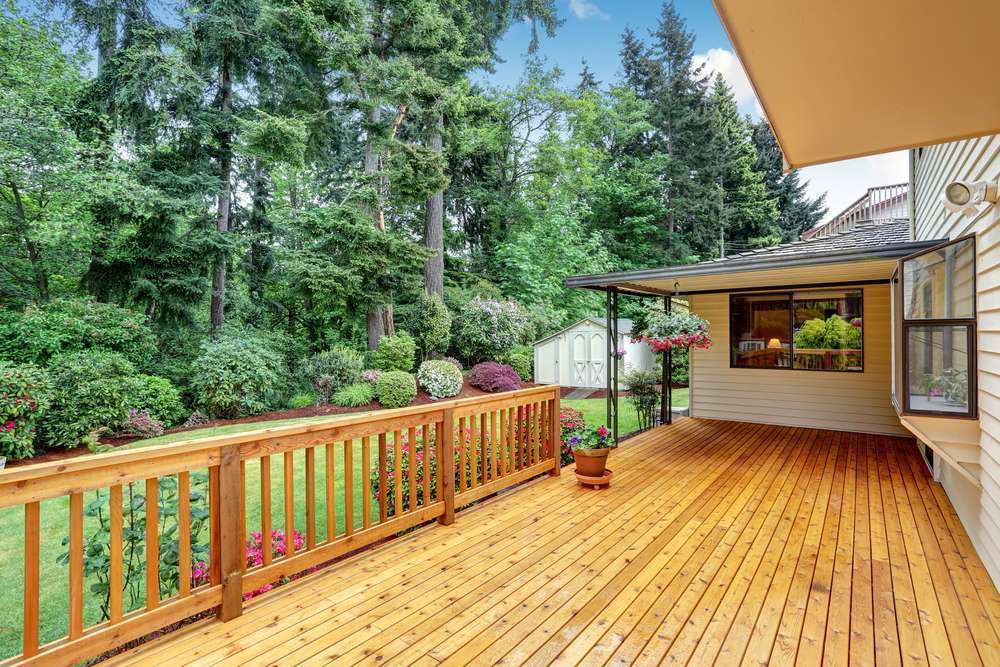
Questions about deck maintenance? Pressure-treated wood is a popular choice for outdoor decks due to its durability and resistance to rot, decay, and insect infestation. However, many homeowners have experienced challenges when attempting to apply solid stain or paint to pressure-treated wood. But, unfortunately they find that it doesn’t hold up well over time. In this article, we will explore the reasons behind this issue. additionally, we will discuss how to address and maintain pressure-treated wood decks effectively.
Deck Maintenance and Understanding the Properties of Pressure-Treated Wood
Pressure-treated wood undergoes a unique curing process that enhances its durability and longevity. This process involves treating the wood with chemicals under high pressure. This process effectively protects it from the elements and extends its lifespan. However, this very process can also create challenges when it comes to applying solid stain or paint to the wood’s surface.
One of the key reasons why solid stain or paint may not adhere well to pressure-treated wood is the presence of moisture. Despite the wood’s enhanced resistance to rot, it can still absorb moisture from rain or other sources. However, this process itself leads to a higher moisture content within the wood. This elevated moisture level can hinder the long-term adhesion of solid stains and paints. Not to mention, causing them to peel, crack, or wear away more quickly than desired.
The Impact of Cracking on Pressure-Treated Wood
In addition to moisture issues, pressure-treated wood is also prone to developing cracks over time. These cracks can result from the natural expansion and contraction of the wood due to changes in temperature and humidity. As the wood expands and contracts, stress fractures can form. Additionally, this creates an opportunity for moisture to penetrate the wood’s surface.
When moisture seeps into these cracks, it can further compromise the adhesion of solid stains and paints. The seepage into cracks also contribute to the degradation of the wood itself. The combination of excessive moisture and cracking can lead to an accelerated breakdown of the protective barrier provided by solid stains and paints, ultimately impacting the overall appearance and integrity of the deck.
Effective Deck Maintenance Strategies
Pressure-treated wood presents unique challenges when it comes to solid stain and paint adhesion. However, there are several effective strategies that homeowners can employ to maintain their decks and prolong the lifespan of the applied finishes.
Proper Preparations
Before applying solid stain or paint to a new pressure-treated wood deck, it is essential to prepare the surface thoroughly. This preparation may include allowing the wood to weather for a period of time. To clarify, this ensures that it is free from excessive moisture, and addressing any existing cracks or imperfections. By taking the time to prepare the wood properly, homeowners can optimize the adhesion and longevity of the applied finishes.
Use of Specialized Products
There are specialized primers, sealers, and stains designed specifically for pressure-treated wood. In fact, these can enhance adhesion and minimize the impact of moisture and cracking. These products are formulated to penetrate the wood effectively, creating a strong bond and providing long-lasting protection against the elements. By utilizing these specialized products, homeowners can mitigate the challenges associated with maintaining pressure-treated wood decks.
Regular Inspections and Maintenance
Regular inspections of the deck and ongoing maintenance are critical for preserving the integrity of the applied solid stains or paints. Homeowners should routinely examine the wood for signs of cracking, peeling, or wear, and address any issues promptly to prevent further damage. Additionally, maintaining a consistent cleaning schedule and applying protective coatings as needed can help extend the lifespan of the finishes and the underlying pressure-treated wood.
Conclusions
In summary, while pressure-treated wood offers numerous benefits for outdoor decks, it does pose challenges when it comes to the long-term adhesion of solid stains and paints. The combination of moisture absorption and cracking can compromise the effectiveness of these finishes over time, impacting both the appearance and structural integrity of the deck. However, by understanding the properties of pressure-treated wood and implementing effective maintenance strategies, homeowners can overcome these challenges and enjoy a beautiful and durable deck for years to come.
